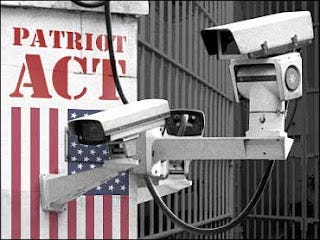National media largely ignores the growing police camera networks in urban areas.

If you’ve attended a Carolina Panthers game or run in an uptown 5K recently, there’s a good chance images of you were captured by Charlotte-Mecklenburg police cameras and stored on department servers.
After beefing up their camera network in advance of September’s Democratic National Convention, police now have access to more than 500 surveillance cameras perched on traffic lights, mounted on buildings and focused on sensitive areas across the city.
But what they don’t have is a rule book giving officers clear guidance on how best to use their expanding power to watch the city’s streets and residents. A team of police officers, technicians and lawyers is literally writing it now, even as department leaders make plans to move the cameras to new corridors and crime-plagued communities.
Civil liberties advocates and civil rights activists worry the cameras will invade the privacy of law-abiding residents and raise the risk of racial profiling in high-crime areas.
“They’re not going to be in Ballantyne. They’re not going to be on Rea Road or out in Myers Park.
We know where they’re going to be,” said James Ferguson, a prominent Charlotte civil rights attorney. “More likely than not, they will be placed in areas that are labeled high-crime areas, and that becomes a surrogate for racial minority areas.”
Charlotte joins a growing number of cities using surveillance cameras. Chicago, for instance, had an estimated 10,000 cameras by 2011. Baltimore had more than 500, concentrated in the city’s downtown area.
A study by the Urban Institute last year said use of the cameras has spread so fast authorities haven’t been able to do thorough studies of their impact on crime. The Urban Institute study examined camera systems in Chicago, Baltimore and Washington, D.C., and found that crime did drop in many areas after cameras were installed.
By 2011, when Democrats announced they would hold their presidential nominating convention in Charlotte, police could pull up images from 400 cameras, mostly in the Central Division, which includes uptown.
That number increased to more than 500 cameras by the first day of the convention.
The cameras, typically encased in white plastic, peer out at the world from behind a transparent dome that protects the lens from the elements as well as vandals. They cost between $8,000 and $8,500.
Charlotte’s not the only city to add cameras for a political convention.
Denver’s police department had 13 cameras recording its downtown before the 2008 DNC. By 2010, the department was monitoring more than 100. Tampa Bay bought 119 cameras before the Republican National Convention, according to the Tampa Bay Times.
Across the bay, in St. Petersburg, 26 cameras purchased for the RNC have been shelved while the city council decides what to do with them.
The CMPD’s Medlock said some of Charlotte’s newest cameras are focused on the airport and places where high-profile dignitaries stayed during the DNC.
Officers are still deciding which cameras to move, and to where. Medlock said the department will look at crime trends for help. The department isn’t seeking input from the public or from the City Council – steps other departments have taken in setting up surveillance policies.
The department also has to deal with physical constraints, like whether a tree or building blocks a view of a crime hotspot, or whether a camera has access to steady electrical power. Cameras won’t peer into private buildings or homes, police say.
Still, some critics suggest the cameras should be retired entirely.
“There’s nothing that says simply because you have cameras that you have to use them, particularly when you think about the potential for harm when you go out with a solution and look for a problem,” Ferguson said.
“It’s not just an expectation of privacy, but it’s also a question of to what extent do we allow government intrusion to go unchecked. … We’re talking about using cameras because we’ve got them, not because we need them.”
Read more here: http://www.charlotteobserver.com/2012/10/27/3626197/expanding-police-camera-network.html#storylink=cpy
The N.C. chapter of the American Civil Liberties Union is worried that decisions about how to use the cameras will be made solely behind the walls of the police department, without public oversight or input.
Medlock said he didn’t know the costs of maintaining the network and paying the officers who watch the cameras, which come with a three-year warranty. The Urban Institute study said that in Baltimore, costs from maintenance and vandals exceeded the initial investment.
Read more here: http://www.charlotteobserver.com/2012/10/27/3626197/expanding-police-camera-network.html#storylink=cpyhttp://www.charlotteobserver.com/2012/10/27/3626197/expanding-police-camera-network.html


